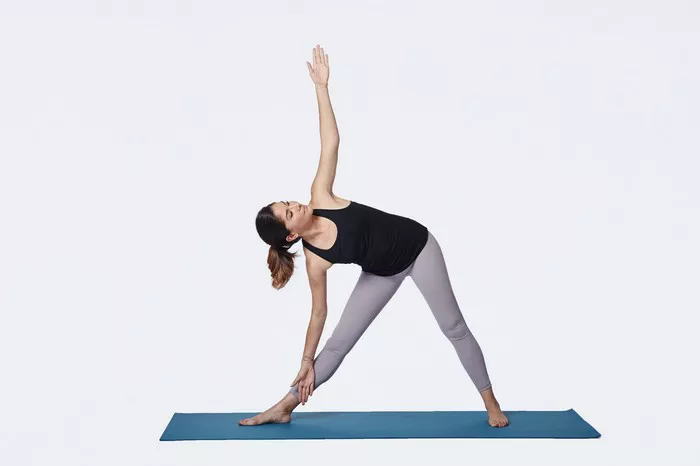Yoga, an ancient practice originating in India, has gained immense popularity worldwide for its physical, mental, and spiritual benefits. While yoga offers a multitude of advantages, it’s crucial to approach it with mindfulness and caution. Like any physical activity, there are certain guidelines to follow to ensure a safe and effective practice. In this article, we’ll delve into the do’s and don’ts of yoga practice to help practitioners make the most out of their experience while avoiding potential pitfalls.
The Do’s
1. Listen to Your Body: One of the fundamental principles of yoga is tuning into your body’s signals. Pay attention to how each posture feels and adjust accordingly. If something doesn’t feel right or causes pain, ease out of the pose or modify it to suit your body’s needs.
2. Practice Regularly: Consistency is key in yoga. Aim to practice regularly, even if it’s just for a few minutes each day. This helps to build strength, flexibility, and mindfulness over time.
3. Focus on Breath: The breath is central to yoga practice. Cultivate awareness of your breath throughout each session, using it to guide your movements and deepen your practice. Smooth, steady breathing can help calm the mind and enhance the benefits of yoga.
4. Use Props Wisely: Props such as blocks, straps, and bolsters can be invaluable tools in yoga practice. Don’t hesitate to use them to support your body and deepen your stretches. Props can help maintain proper alignment and make poses more accessible.
5. Warm-Up Before Practice: Prior to diving into more advanced poses, it’s essential to warm up the body. Gentle stretches, sun salutations, or even a short walk can help prepare the muscles and joints for more intense yoga postures.
6. Stay Hydrated: Hydration is key for optimal physical performance, including during yoga practice. Drink water before, during, and after your session to replenish fluids lost through sweating.
7. Respect Your Limits: While yoga encourages growth and exploration, it’s essential to respect your body’s limits. Avoid pushing yourself too hard or comparing your practice to others’. Honor where you are in your journey and progress at your own pace.
8. Seek Guidance: If you’re new to yoga or unsure about certain poses, consider seeking guidance from a qualified instructor. A knowledgeable teacher can provide valuable cues, corrections, and modifications to ensure a safe and effective practice.
9. Practice Mindfulness: Yoga is not just about physical postures; it’s also a practice of mindfulness and self-awareness. Cultivate present-moment awareness during your practice, letting go of distractions and focusing fully on the sensations of the body and breath.
10. End with Savasana: Savasana, or corpse pose, is a vital part of every yoga practice. Take time at the end of your session to relax fully, allowing your body and mind to integrate the benefits of your practice. Spend at least a few minutes in stillness, absorbing the effects of your efforts.
The Don’ts
1. Don’t Compare Yourself to Others: Yoga is a personal journey, and everyone’s body is different. Avoid comparing yourself to others in the class, especially when it comes to flexibility or strength. Focus on your own progress and growth without judgment.
2. Don’t Force Yourself into Poses: While it’s natural to want to progress in your practice, forcing yourself into advanced poses can lead to injury. Respect your body’s limitations and work within your range of motion. With time and consistent practice, you may naturally progress into more challenging postures.
3. Don’t Skip Warm-Up and Cool-Down: Rushing into intense poses without proper warm-up can strain the muscles and increase the risk of injury. Similarly, skipping the cool-down portion of your practice can leave you feeling sore and stiff. Dedicate time to both warming up and cooling down to support your body’s needs.
4. Don’t Hold Your Breath: It’s common for beginners to unconsciously hold their breath while attempting challenging poses. However, breath-holding can increase tension in the body and limit the benefits of the practice. Remember to maintain steady, even breathing throughout each posture, even when it feels challenging.
5. Don’t Push Through Pain: Yoga should never be painful. While you may experience discomfort as you stretch and strengthen your body, sharp or intense pain is a signal to back off. Listen to your body’s cues and modify or skip any poses that cause pain or discomfort.
6. Don’t Overlook Alignment: Proper alignment is essential for a safe and effective yoga practice. Neglecting alignment can lead to strain or injury over time. Pay attention to cues from your instructor, use mirrors when available, and seek guidance if you’re unsure about proper alignment in a particular pose.
7. Don’t Eat a Heavy Meal Before Practice: Practicing yoga on a full stomach can lead to discomfort and interfere with your ability to move freely. Avoid heavy meals for at least two to three hours before your yoga practice.
8. Don’t Ignore Pre-Existing Injuries or Conditions: If you have pre-existing injuries or medical conditions, it’s essential to inform your instructor before class. Certain poses may need to be modified or avoided altogether to prevent exacerbating existing issues. Listen to your body and prioritize safety above all else.
9. Don’t Neglect Rest and Recovery: While yoga can be energizing, it’s equally important to give your body adequate rest and recovery time. Avoid overtraining and allow yourself days off to rest and recharge. Incorporate restorative practices such as gentle stretching or meditation into your routine to support overall well-being.
10. Don’t Forget the Mind-Body Connection: Yoga is not just about physical exercise; it’s about cultivating a deeper connection between mind and body. Avoid approaching yoga as solely a workout and instead embrace it as an opportunity for self-exploration and growth on all levels.
Conclusion
In conclusion, the practice of yoga offers a myriad of benefits for the body, mind, and spirit. By following these do’s and don’ts, practitioners can ensure a safe, fulfilling, and transformative yoga experience. Remember to listen to your body, honor your limitations, and approach your practice with mindfulness and compassion. With dedication and consistency, yoga can become not only a physical practice but a way of life.
FAQs:
What are three disadvantages of yoga?
Three disadvantages of yoga are the potential for injury if poses are performed incorrectly or without proper guidance, the perception of it being primarily for flexible people, which may deter beginners, and the possibility of spiritual or cultural appropriation when practiced without understanding its origins and cultural significance.
What is the golden rule in yoga?
The golden rule in yoga is often considered to be “Ahimsa,” which means non-violence or non-harming. It emphasizes compassion and kindness towards oneself and others, promoting a mindset of harmlessness in both actions and thoughts.
Is yoga safer than gym?
Whether yoga is safer than the gym depends on various factors such as individual health conditions, proper instruction, and personal preferences. Yoga generally focuses on controlled movements and breathing, which may reduce the risk of injury compared to certain high-intensity gym activities. However, safety also depends on practicing within one’s limits and seeking guidance when necessary.

















